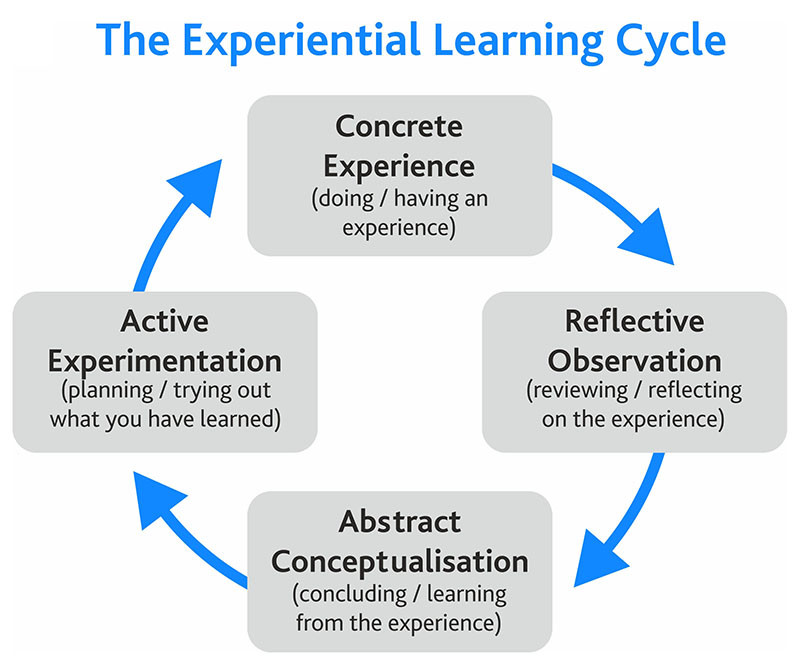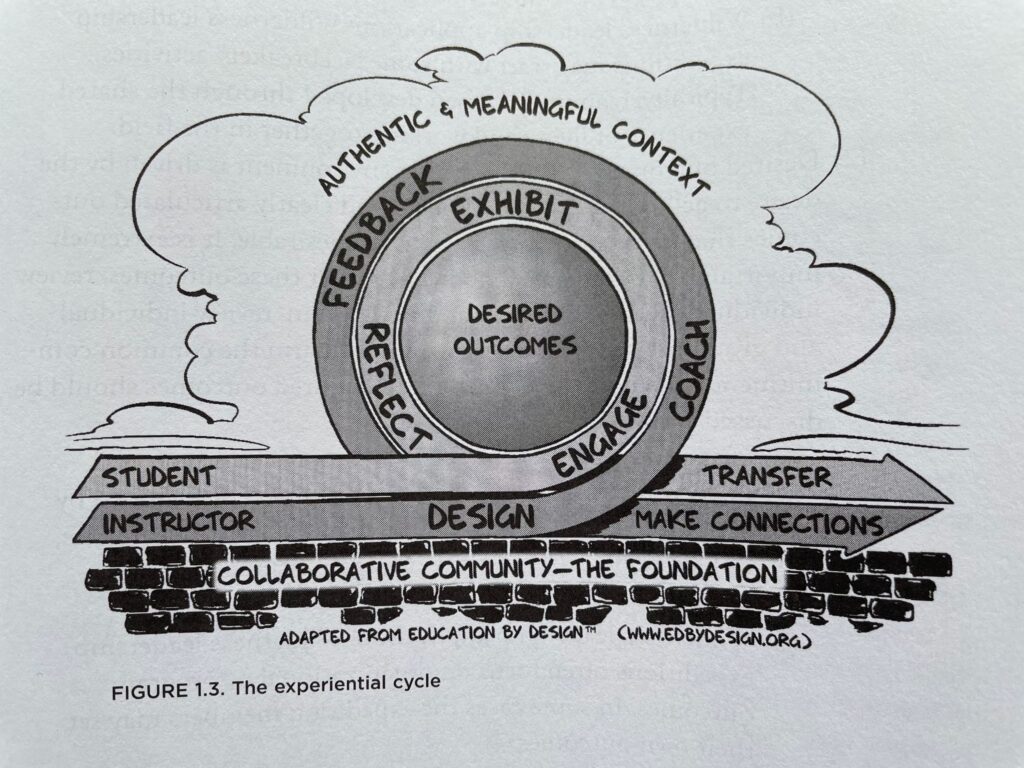There is a great deal of literature and discussion about what experiential learning (ExL) means. One of the most common (and generally shared) concepts is the Experiential Learning Cycle. This model appears in disciplines from college teaching to corporate training to summer camps, and is an important theoretical underpinning for designing experiential course components.
The Basic ExL Cycle
Though the terminology might differ depending on context, most models of experiential learning consider it to be cyclical, with three (or sometimes four) phases:
- Doing
- Reflecting – what does this mean? What are we learning from it?
- Applying – what can we do with what we’ve learned? – sometimes broken into two phases:
- Abstracting – what conclusions can we draw from it?
- Practical application or experimentation – what happens if we try it on something else?
Some models use this simplified terminology:
- What?
- So what?
- Now what?
These phases are iterative, because they culminate in transfer of learning. Each phase prepares participants to build on what they are learning through different or more complex experiences.
The cycle can be visualized like this:

While experiential learning is sometimes called “learning by doing,” the most important takeaway here is that “doing” alone is not enough. Reflection — a structured opportunity to illuminate what participants have learned — and application — figuring out what to do with what they’ve learned — are essential.
The ExL Cycle from the Teacher’s Point of View
The phases of the experiential learning cycle never quite go according to plan. The beauty and the challenge of learning through direct action, reflection, and application is that each group of learners (for example, a class or project team) learns something slightly different. They also, through reflection, attach different levels of importance to parts of it. Therefore, the teacher cannot count on a universal outcome and must be prepared to be flexible.
Much of the work of experiential teaching is not leading the experience or reflection, but structuring it before it begins to create both consistency and space for flexibility. That means that the teacher is not necessarily looking at experiential learning primarily as doing/reflecting/applying (the student experience).
Here’s a model (from outdoor education, which draws heavily on experiential learning theory) of how the experiential learning cycle works for teachers and designers:

(The phases of the student experience are slightly different from the terms used earlier in this article, but could easily be replaced with the more typical “what?” “so what?” and “now what?” concepts.)
You’ll notice that student and instructor experiences, in this version of the cycle, run parallel, but not on exactly the same schedule. For example, some of the work of the instructor comes before the students’ concrete experience (the design of the experience), and some spans multiple phases (coaching and feedback span both doing and reflecting). This shows that successful experiential learning and teaching requires significant instructor preparation and attention to context, interpersonal foundations, and outcomes. Once the student experience has begun, the instructor takes on a coaching role. In short, the instructor’s preparation provides structure and integration of the experience, reflection, application, and the rest of the course, as well as the ability to be flexible and respond to student needs.
Further Guidance
For guidance on how to design for successful experiential learning and teach through coaching, consult the CLT.